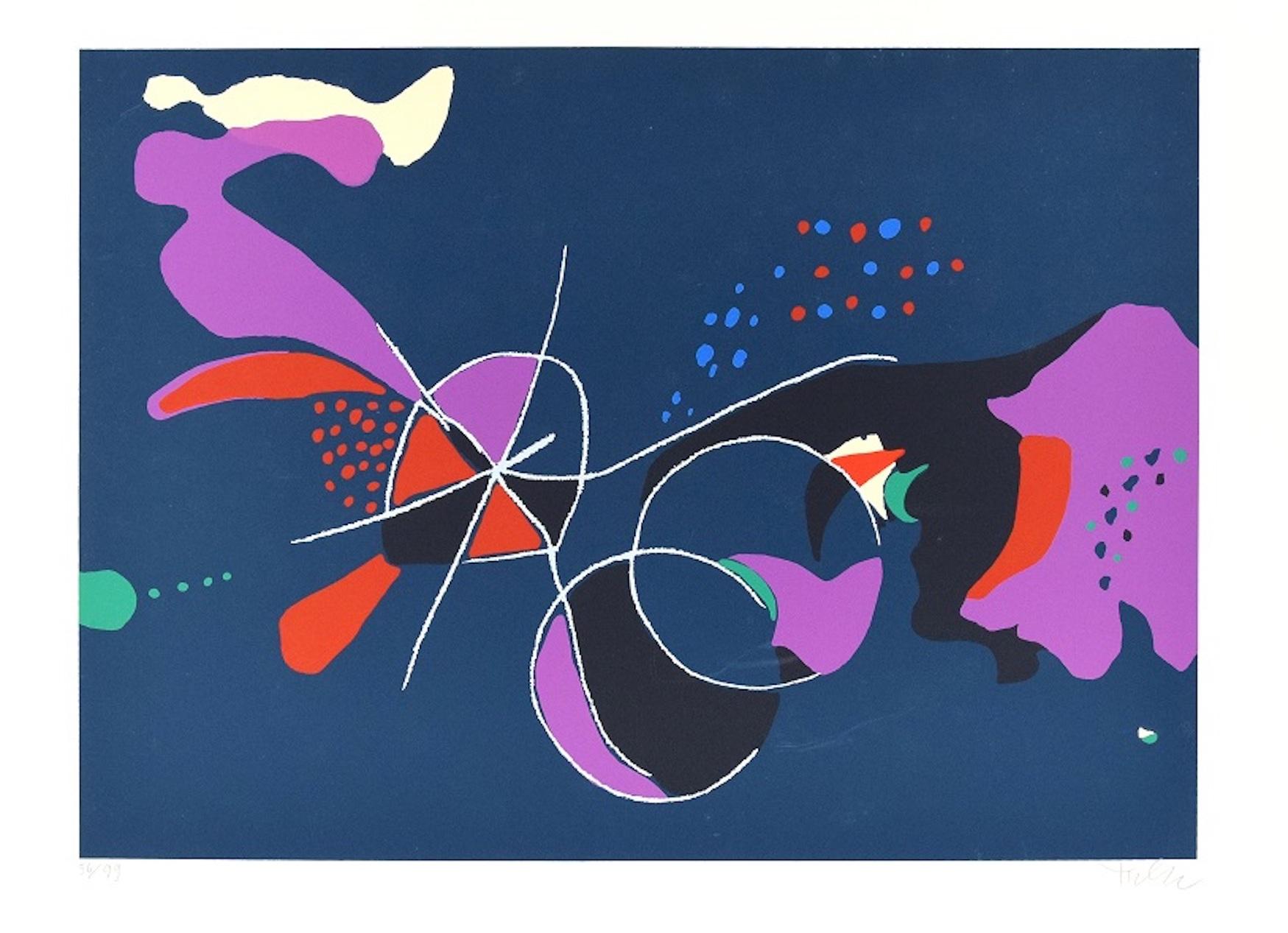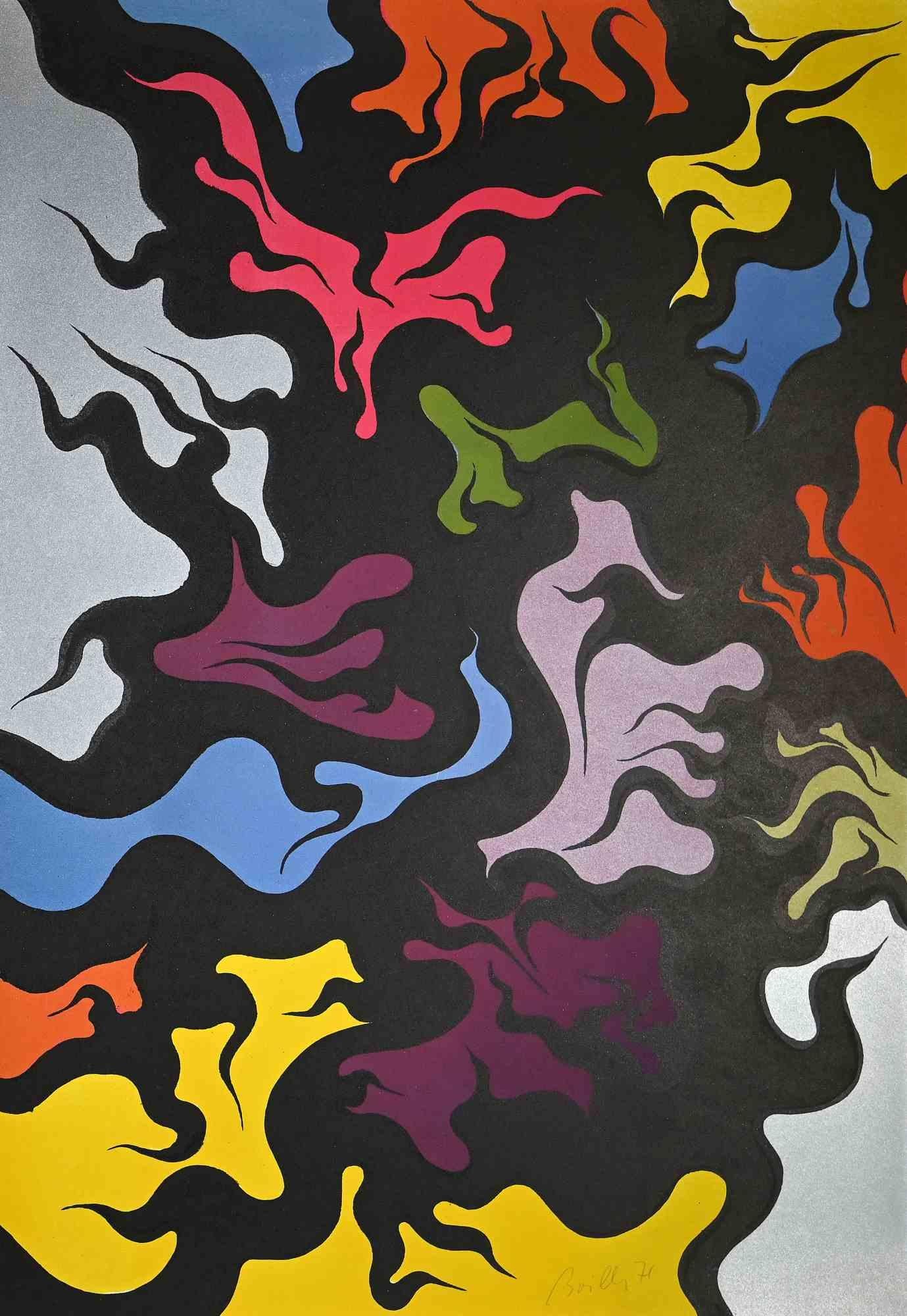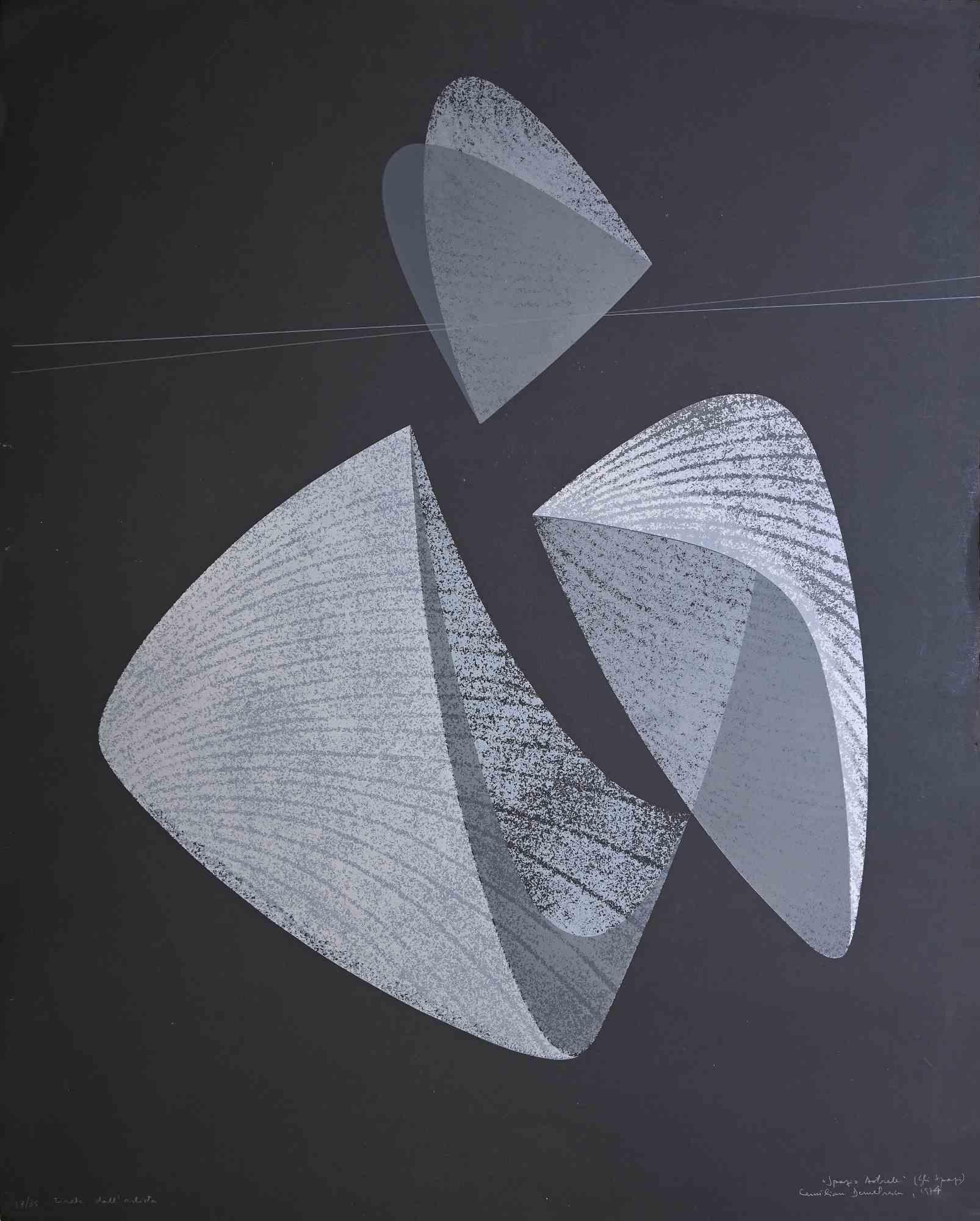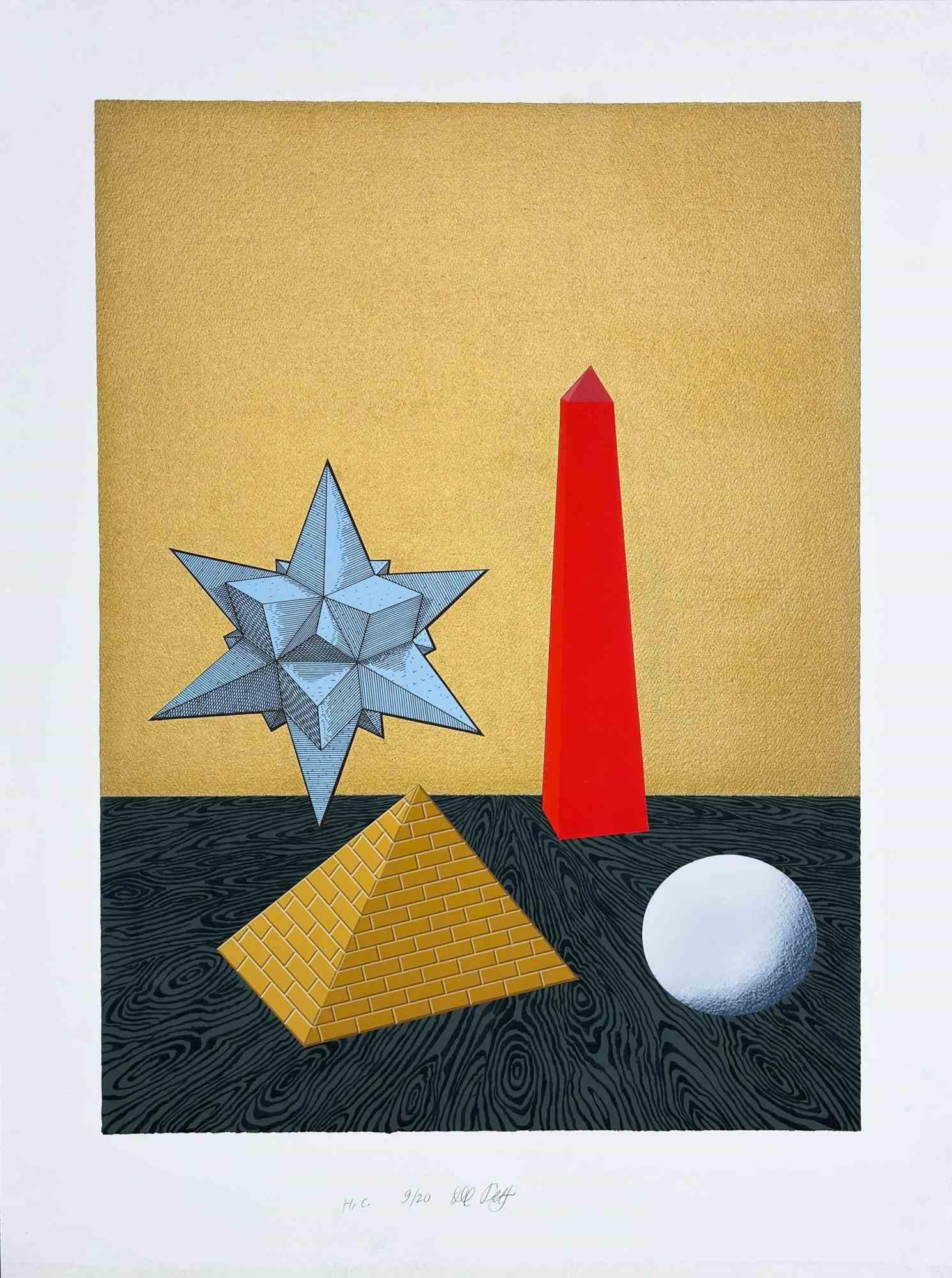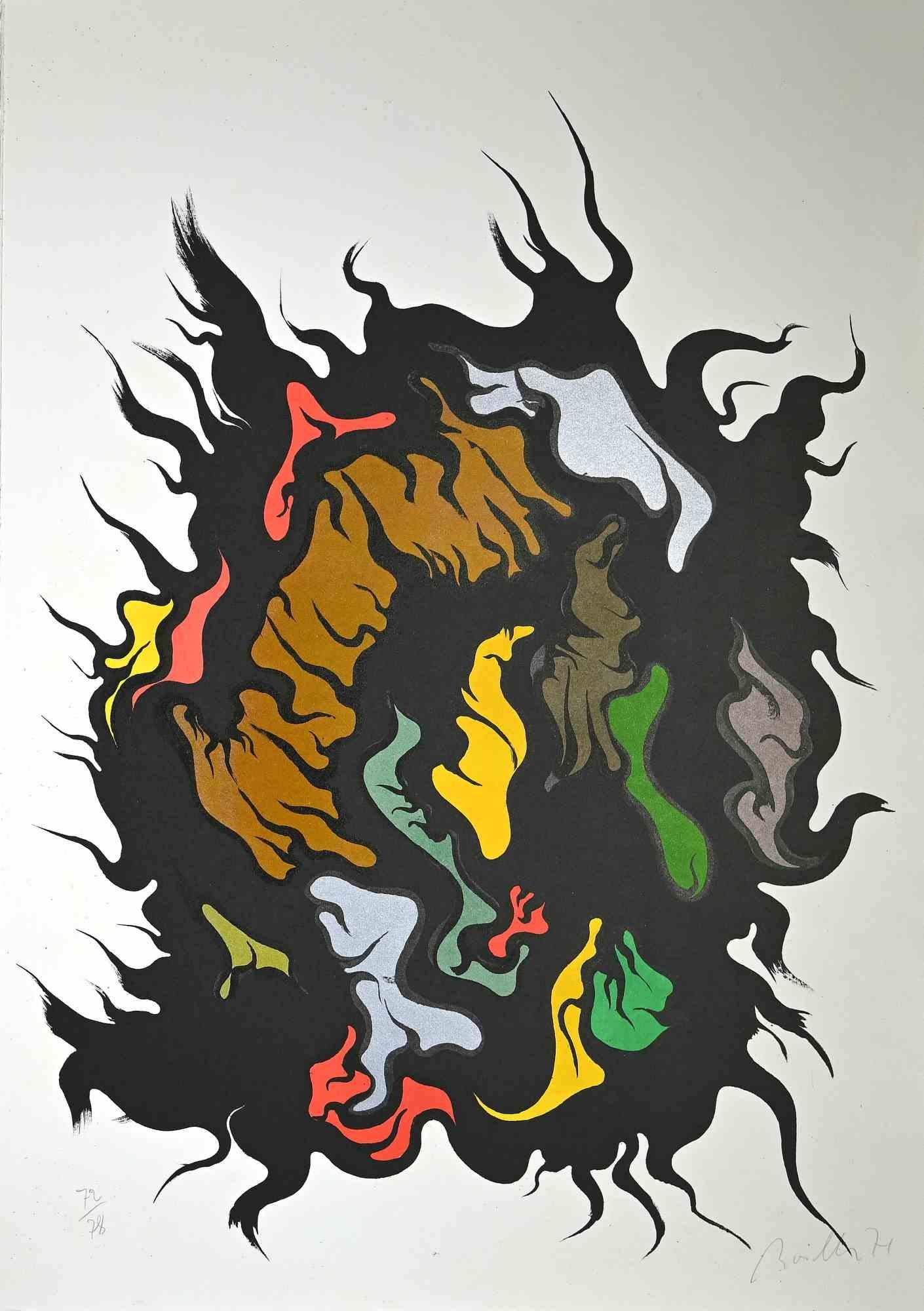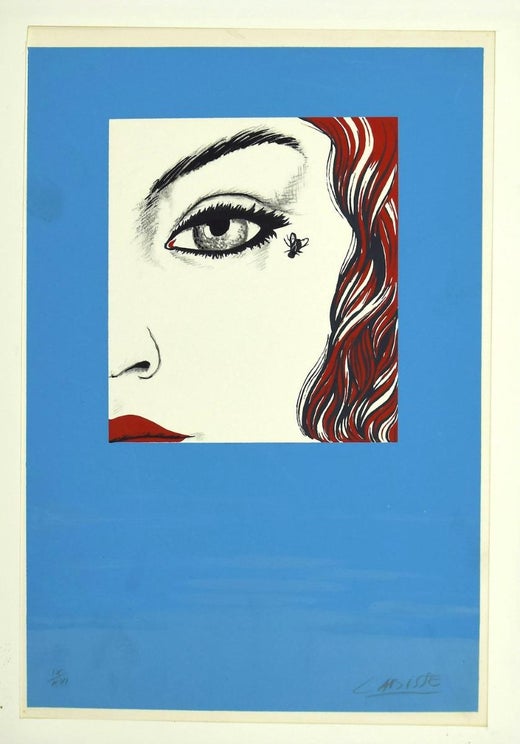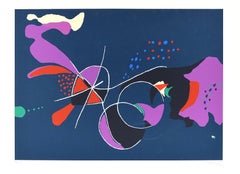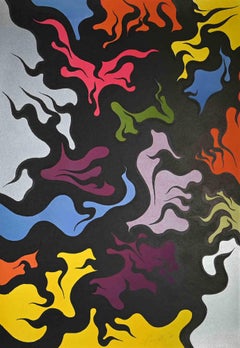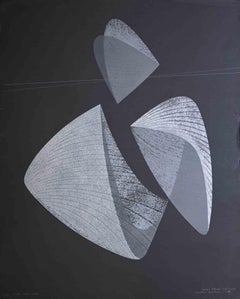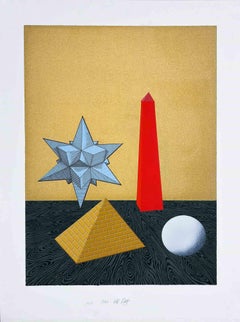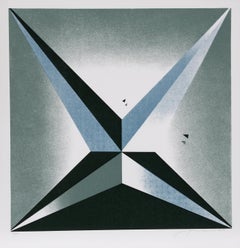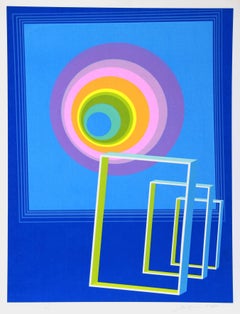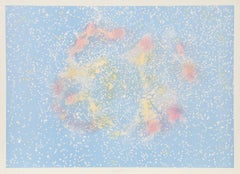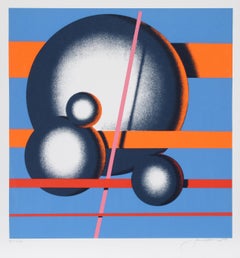Felix LabisseStellar Composition - Screen Print y Félix Labisse - 1970s1970s
1970s
About the Item
- Creator:Felix Labisse (1905 - 1982, French)
- Creation Year:1970s
- Dimensions:Height: 13.78 in (35 cm)Width: 9.85 in (25 cm)Depth: 0.04 in (1 mm)
- Medium:
- Movement & Style:
- Period:
- Condition:Insurance may be requested by customers as additional service, contact us for more information.
- Gallery Location:Roma, IT
- Reference Number:Seller: M-1018911stDibs: LU65034564911
Felix Labisse
Félix Labisse was a self-taught painter, illustrator and theater designer born in Douai, a small commune in France close to the Belgian border. In Douai, Labisse studied at the Collège Saint Jean and later enrolled at the École de Pêche in Ostend, a city on the Belgian coast. Labisse was closely associated with the Expressionist painter James Ensor, whom he met on a visit to Ostend in 1922. Subsequently, Labisse’s early works are anchored in Flemish Expressionism under the influence of Ensor. In his later works, Labisse developed his own aesthetic, exploring the boundaries between fantasy, ritual, magic and eroticism. He experimented with perspective and used motifs such as naked women and hybrid beasts in fantastical settings. Labisse also met the filmmaker Henri Storck, and they founded the Club du Cinéma d’Ostende, which disseminated avant-garde films by Man Ray, Carl Dreyer and Fritz Lang.
Beginning in 1927, Labisse divided his time between Paris and Ostend, becoming a major French painter. His first exhibition, which gained him critical acclaim, took place at the Ostend Gallery of Modern Art in July 1928. In 1933, Labisse settled in Paris and produced the set and costumes for Autour d’une Mère at the Théâtre de l’Atelier. In Paris, he became part of the Surrealist milieu, meeting André Masson, Max Ernst, Raymond Queneau, René Magritte and Paul Delvaux. It was in 1938 that Labisse fully established his career as a painter after his exhibition at the Palais des Beaux-Arts in Brussels. In 1947, the French filmmaker Alain Resnaise created a short film starring Labisse in his studio titled Visite à Félix. Labisse was also a successful illustrator, producing drawings for the books Le Bain avec Andromède (1944) and Histoire Naturelle (1948) by Robert Desnos. His subjects included creatures such as the cyclops and the medieval French Guivre — a serpentine creature.
By 1951, Labisse moved to Neuilly-sur-Seine, where he would later die. Closely linked to Surrealism — a movement to which he never completely adhered too — Labisse is perhaps most recognized for his 1960s series of austere, blue goddess-like women. Interestingly, his political differences estranged him from the writer André Breton, a communist who was the founder of Surrealism and author of the Surrealist Manifesto. Remaining on the sidelines of Breton’s movement, Labisse continued to explore the limits of his imagination through painting. In 1957, Labisse published his Le Sorcier des Familles: Almanach Fatidique, featuring texts and illustrations in the layout of a calendar. He earned the respect of Breton, who wrote to him: "Beyond what may have sometimes divided us, let me tell you that I greatly appreciate your Sorcier des Familles […] This is a surrealist book, as I see it. My warmest compliments."
Labisse had his first retrospective in July 1960 at Knokke Casino in Belgium, where he exhibited 105 paintings. In 1966, he was elected a member of the Académie des Beaux-Arts in France, and in 1974, he became a member of the jury at the Cannes festival. Labisse maintained a lifelong friendship with Ensor that is immortalized in the painting Bonjour M. Ensor (1964).
(Biography provided by Stern Pissarro Gallery)
- ShippingRetrieving quote...Shipping from: Roma, Italy
- Return Policy
More From This Seller
View All1970s Abstract Abstract Prints
Screen
1970s Abstract Abstract Prints
Screen
1970s Contemporary Abstract Prints
Screen
1960s Contemporary Figurative Prints
Screen
1970s Abstract Abstract Prints
Screen
1970s Abstract Abstract Prints
Screen
You May Also Like
1970s Pop Art Abstract Prints
Screen
1970s Surrealist Abstract Prints
Screen
1980s Conceptual Animal Prints
Lithograph
1970s Pop Art Abstract Prints
Screen
1970s Modern Abstract Prints
Screen
2010s Abstract Geometric Abstract Prints
Screen
